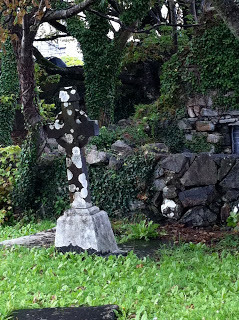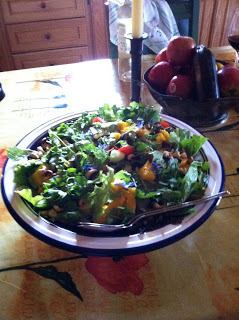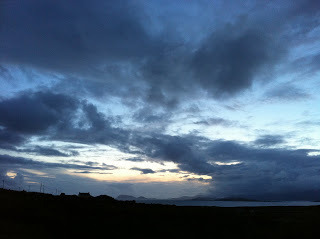Susan Rich's Blog, page 64
August 24, 2011
New Madrid Review - Summer Issue and Fall Theme on Japan

My past year has been wildly busy in terms of public appearances but I have been slacking in terms of sending out new work. This makes the publication of three poems in the new new madrid even sweeter. Two of the poems concern my time fleeing a fire in Spain and I sent them to new madrid review in part because of the journal's name. However, if I had read the small print on the website I would have seen this lovely explanation:
New Madrid is the national journal of the low-residency MFA program at Murray State University. It takes its name from the New Madrid seismic zone, which falls within the central Mississippi Valley and extends through western Kentucky. Between 1811 and 1812, four earthquakes with magnitudes greater than 7.0 struck this region, changing the course of the Mississippi River, creating Reelfoot Lake in Tennessee and ringing church bells as far away as Boston.
In any case, I am happy that editor-in-chief (and great poet) Ann Neelon and crew enjoyed the work enough to take three pieces -- related to Spain or not. The journal has incredibly high production values and an international focus. My favorite poems here (and there are many to choose from) are translations (Peter Golub) from the Russian poet, Aleksey Porvin .
Submissions are currently open for the Winter 2012 issue themed on artistic commerce between Japan and the United States. Keep reading for more information...
Winter 2012Submissions open August 15, 2011 and go through October 15.Our Winter 2012 issue will be dedicated to the theme of artistic commerce between Japan and the United States. Though we originally intended our Japan in America/America in Japan issue as an acknowledgment of MSU's recently instituted Japanese major—the first to be offered in the commonwealth of Kentucky—we have expanded its purpose to include commemoration of the victims of the March 2011 earthquake and consequent tsunami and nuclear emergency in Japan.We are looking for work in all literary genres that gives evidence of the dynamic interaction between Japanese and American cultures. Possible categories of interest include: literary responses to the earthquake and its aftereffects; responses to classical Japanese poetry and poetics; responses to the work of Kenzaburo Oe, Kobo Abe, Haruki Murakami and other modern and postmodern Japanese fiction writers; work in new Japanese literary forms inspired by manga, cell phone texts, etc.; translations of Japanese literary works into English; literary travel writing by Americans visiting Japan or by Japanese visiting the United States; work about Japanese immigration to the United States, the internment of Japanese-American citizens in the United States during World War II, the dropping of the atomic bomb on Nagasaki and Hiroshima, or along other historical themes; new takes on traditional Japanese aesthetics and/or spiritual practices.All submissions should be of interest to the general reader. Please do not submit scholarly articles.
Published on August 24, 2011 20:06
August 14, 2011
Horses at Coole Park, Home of Lady Gregory, Friend to W.B. Yeats
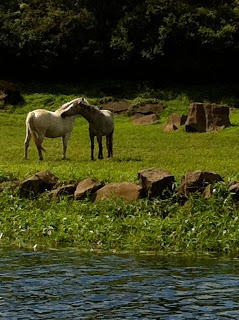 Horses at Coole River in Coole Park. This is the grounds of Lady Gregory's house where Yeats did much of his writing. How nice to have an intelligent and well-heeled patron. How nice to have a sunny day in the west of Ireland.
Horses at Coole River in Coole Park. This is the grounds of Lady Gregory's house where Yeats did much of his writing. How nice to have an intelligent and well-heeled patron. How nice to have a sunny day in the west of Ireland.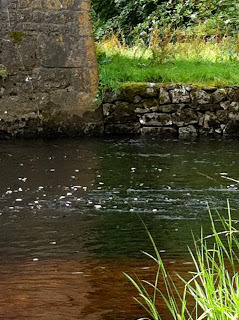 We also went to Yeats Tower where he lived with his wife George. The tower has been shut for the past two years which makes the beauty of the land all the stronger. We had the place to ourselves today and read poems to each other on the bridge just before the tower. A day to remember.
We also went to Yeats Tower where he lived with his wife George. The tower has been shut for the past two years which makes the beauty of the land all the stronger. We had the place to ourselves today and read poems to each other on the bridge just before the tower. A day to remember.
Published on August 14, 2011 13:47
August 12, 2011
In Spiddal and Out of the Rain
Published on August 12, 2011 13:17
August 11, 2011
Dinner in Galway with Poets and Writers
Published on August 11, 2011 15:54
August 9, 2011
Good-bye to Eyeries
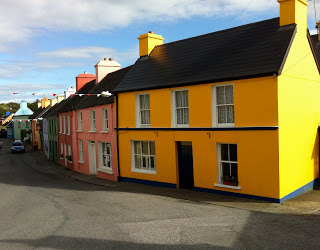
Goodnight Eyeries, Goodnight
I hope to return to this village one day. One week just isn't enough. Tonight there were more adventures, but I'll keep that for another time. Here are photographs of the village taken yesterday by me.
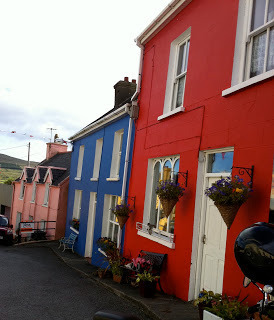
Published on August 09, 2011 15:55
August 8, 2011
At the Cheesemaker's: Visting Milleens
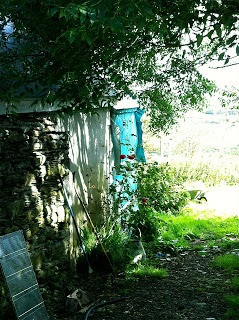
At Milleens
This was our morning field trip, across the road, to the right of the graveyard and up the hill. Milleens is the magical, soft floral cheese that we've eaten with our supper most nights. It also appears to be the favorite cheese of the royals - as was evident during their visit to the English market in Cork this year. Everything about the geography of this place, the men (the women were out of town) who make the cheese, and the taste of the cheese itself seems out of a storybook from another era.
One of the things that interested me the most was an aside when Norman mentioned that we were also standing in a place called Milleens which included his house, his son's house, the cheese-making cottage, and a swatch of pasture land. Like Anam Cara, we were about a fifteen minute walk from the village of Eyeries, but clearly not part of the village. It struck me that this is how villages, towns, and cities are born. Somebody builds a house, then his son (in this case) builds a second house...Perhaps this is too obvious to be of interest, but I've never been inside the experience before.
I also learned that they keep the milk at "blood temperature" as they add just a minuscule amount of rennet, that when finished, the cheese is cut with an instrument called a "harp." I also learned how clearly cheese-making is a way of life filled with incredible beauty but also the real dangers of pasteurization, and how much science goes into the process.
Milleens is world famous. They make one type of cheese in two sizes. That's it. It's like a poem of cheese. Norman, the cheese maker lives in a modest house next to the cheese making cottage. The planters outside his house are cast off cheese making machinery. It does my heart good to know that art and commerce can live so harmoniously here.

The cheese, the cheese maker, and me
Check out the cheese on the bottom, right. Make that the south side.
[image error]
Basket of Irish products given to the Queen at English Market, Cork
Published on August 08, 2011 03:44
At the Cheesemaker's: Visting Mileens

At Mileens
This was our morning field trip, across the road, to the right of the graveyard and up the hill. Mileens is the magical, soft floral cheese that we've eaten with our supper most nights. It also appears to be the favorite cheese of the royals - as was evident during their visit to the English market in Cork this year. Everything about the geography of this place, the men (the women were out of town) who make the cheese, and the taste of the cheese itself seems out of a storybook from another era.
One of the things that interested me the most was an aside when Norman mentioned that we were also standing in a place called Mileens which included his house, his son's house, the cheese-making cottage, and a swatch of pasture land. Like Anam Cara, we were about a fifteen minute walk from the village of Eyeries, but clearly not part of the village. It struck me that this is how villages, towns, and cities are born. Somebody builds a house, then his son (in this case) builds a second house...Perhaps this is too obvious to be of interest, but I've never been inside the experience before.
I also learned that they keep the milk at "blood temperature" as they add just a minuscule amount of rennet, that when finished, the cheese is cut with an instrument called a "harp." I also learned how clearly cheese-making is a way of life filled with incredible beauty but also the real dangers of pasteurization, and how much science goes into the process.
Mileens is world famous. They make one type of cheese in two sizes. That's it. It's like a poem of cheese. Norman, the cheese maker lives in a modest house next to the cheese making cottage. The planters outside his house are cast off cheese making machinery. It does my heart good to know that art and commerce can live so harmoniously here.

The cheese, the cheese maker, and me
Check out the cheese on the bottom, right. Make that the south side.
[image error]
Basket of Irish products given to the Queen at English Market, Cork
Published on August 08, 2011 03:44
August 7, 2011
Good Sunday Morning from the Anam Cara Writers Retreat
Published on August 07, 2011 10:22
August 6, 2011
Anam Cara - Evening
Published on August 06, 2011 13:55
Anam Cara - Day Six
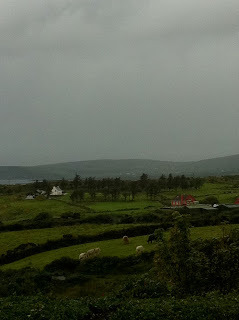 Morning rain outside my window
Morning rain outside my windowI'm happy to report that my day of work as play did make a difference. I have two new pieces started although I've little idea where they're going. I also found lots of fragments in my notebook and in old files. I've let go of the idea that nothing I'm doing at the moment has a focus and trying to give myself over to the unexpected. The novelists this morning were speaking about outlines and timelines and I knew once again that I don't work that way.
Instead, I'm deep into rereading Trapeze by poet Deborah Diggs. It is a stellar book - my favorite by any contemporary poet, I think. And so back to reading, thinking, and staring out windows.
Published on August 06, 2011 01:35

